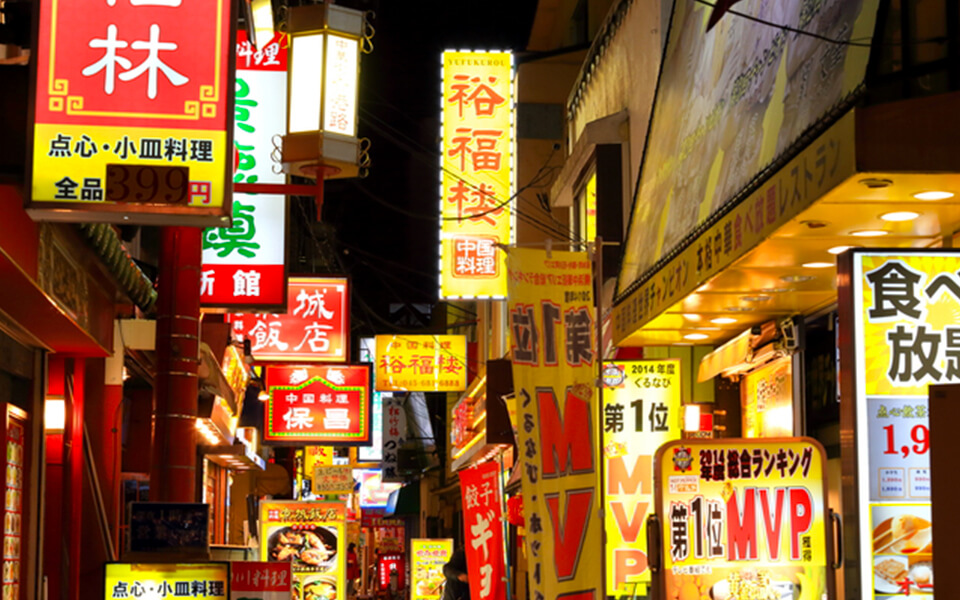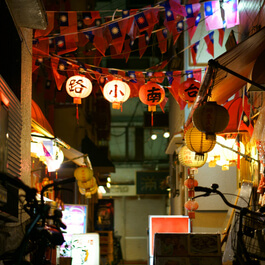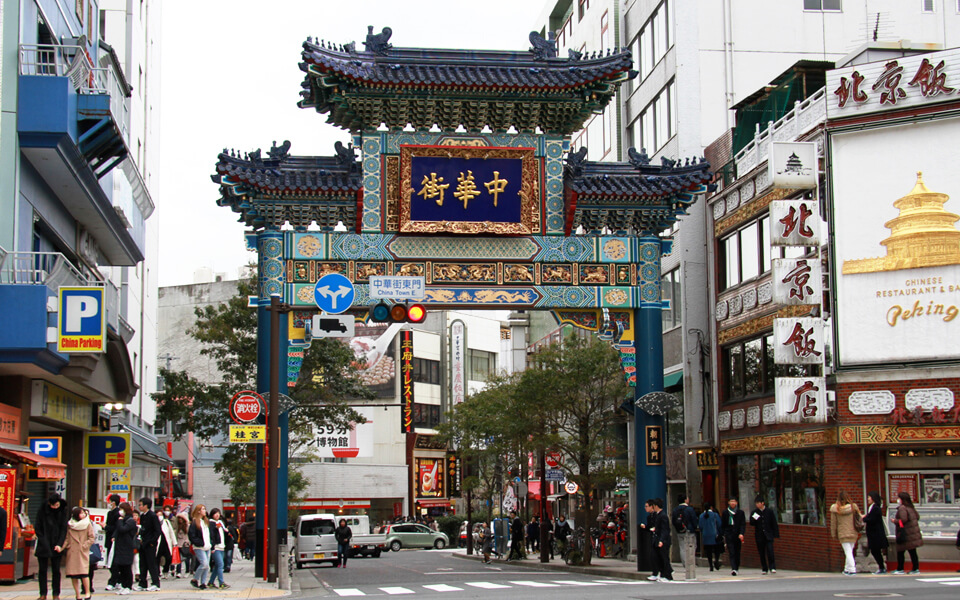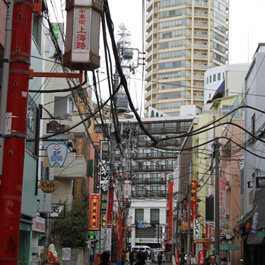The Chinatown Labyrinth

Off the beaten path, the labyrinth awaits.
Get lost in the back streets of Japan’s biggest Chinatown.
Not only is Yokohama Chinatown the biggest in the country; it’s arguable one of the best Chinatowns in all of East Asia — perhaps even the world. Swarming with over 600 shops and restaurants, the area spans about 500 meters on all four sides. Needless to say, there’s much more to this bustling destination than the large stores lining Chukagai Odori (Chinatown Main Street). One step in a new direction and its real treats lie in less visible sights and establishments: the narrow back streets and hole-in-the-wall shops you never saw coming.
In the labyrinth that is Chinatown, the familiar storefronts of big businesses are but one hue in a palette of seemingly infinite colors. The deeper you venture into these back streets and alleys, the further you trek from the noise of pedestrian traffic; the more vivid these colors seem. To give a list of recommendations would be, in a sense, counterproductive to the nature of serendipity inherent in such an adventure. Still, most would agree that the best bowl of steaming rice porridge, the most addicting toshomen (knife-cut noodles) and the juiciest soup dumplings are, indeed, to be found off the beaten path.
In Greek mythology, the Labyrinth was an elaborate maze designed to trap the monster Minotaur, who, coincidentally, was known for his gluttony. According to the myth, seven girls and seven boys entered the maze every year, only to be found and ravished by the half-bull, half-man creature. It seems appropriate, then, to liken the winding paths of Chinatown to a labyrinth. Its visitors forever seeking a newfound gourmet treasure, or perhaps a rare souvenir, as Minotaur, too, roamed in search of his next fulfillment — wandering, discovering and finally indulging to the heart’s content.

Step into the back streets and pathways that draw you in. You’re sure to arrive at some unexpected surprises. Remember to stay conscientious, however, of the area’s residents. Chinatown is not just a popular attraction, it’s also a home to hundreds of people who live and work there. Be polite and try not to disturb the local community.

Slanted streets or enticing aromas — either way, find your bearing in the mystery of Chinatown.
Why is it that, upon stepping into Yokohama Chinatown, your sense of direction seems to dissipate altogether?
The answer is quite evident if you look at a map. While surrounding streets run parallel to the harbor, Chinatown’s roads and pathways lie diagonally, appearing as a slanted cluster in an otherwise pristine grid. Hence, the initial sense of disorientation. You, or your body rather, may have intended to walk straight into the main avenue, but alas, this neighborhood has its own plans. The confusion ensues, however, because once inside, even the buildings beyond Chinatown’s perimeter appear slanted and strange. Another cause for disoriented senses.
It all goes back to the land’s origin as a plot of farmland known as Yokohama Shinden. This was before the city’s ports were opened (foreign trade in Yokohama officially began in 1859). When planting crops, it was necessary for farmers to plant north to south, so their produce would receive optimal sunlight. A logical choice by any measure. So, Chinatown may run diagonal to the harbor, but its streets also adhere to the Earth’s cardinal directions. As it turns out, then, there’s nothing to fear about this urban labyrinth. If you look up at the sky and note which way the sun sets or rises, you’ll know what’s east and west (you can also check the compass app on your smartphone). If you’re still feeling lost, it’s most likely due to the bustling array of shops, restaurants, mouth-watering aromas and pedestrians around you, rather than a mere directional dispute.

Entering Yokohama Chinatown can, at times, feel overwhelming due to the sheer number of shops and restaurants lining its streets. That, coupled with the disorienting nature of the area, makes the adventure all the more exciting, however. Retreat into a nearby store and find your bearings before exploring this bustling neighborhood.
